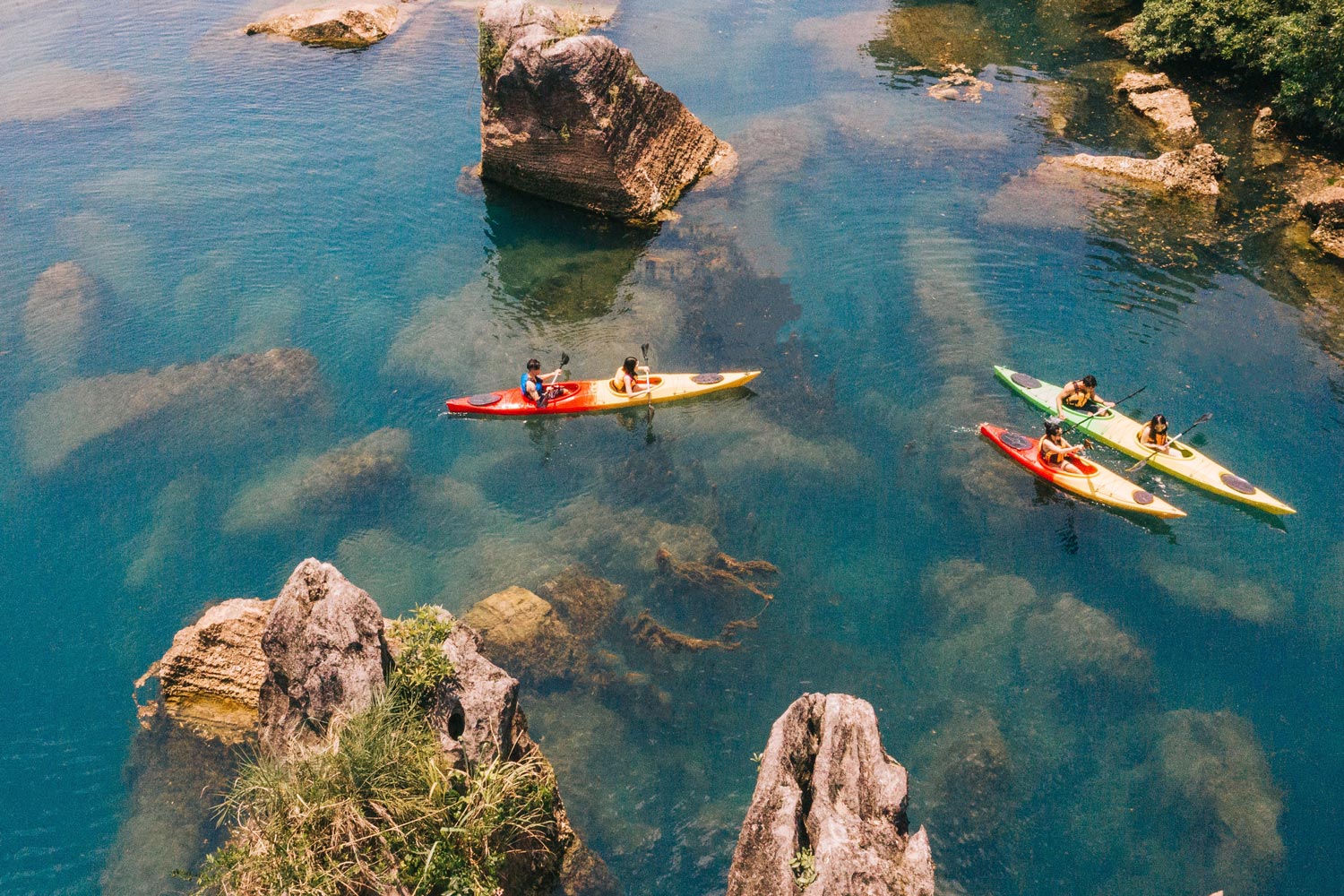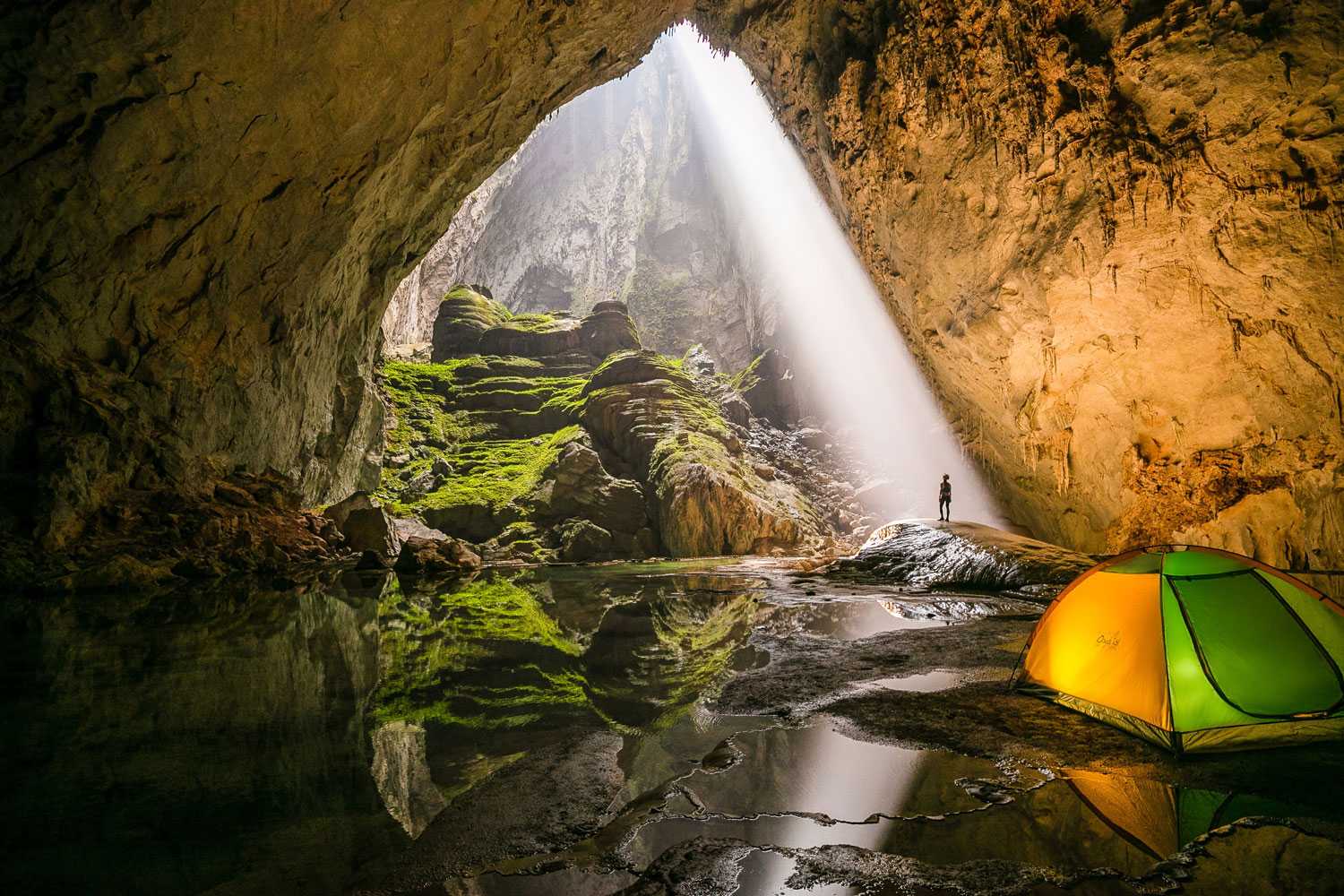Ba Be National Park
Ba Be has steep limestone mountains, many large valleys and lush green forests, making it an ideal destination for tourists who love adventure and exploration. The waterfalls, caves, and lakes here create an amazing natural landscape with more than 550 species of rare flora and fauna. Exploring Ba Be by boat or trekking or cycling through the forest will definitely give you many memorable experiences, then rest and recharge at homestays and motels in local Tay villages.
Ban Gioc Waterfall
Ban Gioc is one of the most beautiful and famous waterfalls in Vietnam and images of this landscape appear in countless motels and inns for tourists. The water flowing down from Quay Son creates Ban Gioc waterfall, marking the two sides of the border between Vietnam and China with impressive scenery. Visitors can visit the waterfall by bamboo raft, walking close to the waterfall to feel the rushing water creating white foam.
Ha Long Bay
Ha Long Bay’s landscape is a combination of thousands of limestone mountains and gentle blue sea water, making it the most attractive destination in Vietnam. With more than 2,000 large and small islands, Ha Long Bay offers visitors countless experiences from sightseeing to yachting, kayaking, mountain climbing, swimming, seaplane flying… If you want to avoid crowded spots, you can You can move across Lan Ha Bay to enjoy another beautiful, peaceful bay.

Phong Nha – Ke Bang National Park
With rolling hills and mountains covered with dense tropical forests and winding rivers between ravines, Phong Nha – Ke Vang is one of the most beautiful national parks in Vietnam. The deeper and farther you go into this area, the more you will discover the breathtaking beauty of this place and be sure to choose it on your travel itinerary. In particular, only a few tourists get to explore wonders such as Son Doong cave, or play zipline, kayak in Dark Cave, or wander through Thien Duong cave…

son Doong cave
In addition to Phong Nha – Ke Bang National Park, the Lonely Planet editorial team specifically chose Son Doong as a natural wonder of Vietnam because it is the largest cave not only in Southeast Asia but also in the world. Son Doong is more than 5 km long, 200 m high and in many places up to 150 m wide. The cave is located in a limestone mountain range in the Vietnam-Laos border area, and was accidentally discovered by Ho Khanh, a local resident while avoiding the rain in 1991. Today, visitors must book a tour in advance with sufficient physical condition. know how to swim… just discovered Son Doong on a 4-day journey.
Thuy Son
Thuy Son is the largest and most famous mountain in the Ngu Hanh Son mountain cluster, along with the surrounding caves forming a spiritual center of ancient Buddhist and Hindu beliefs. Visitors can climb Thuy Son following two routes, of which the route is closer to the sea for more beautiful scenery. At the top of the stairs on the mountain is Tang Chon cave, right behind is Linh Ung Pagoda.
Mui Ne
Mui Ne (Phan Thiet) is a famous tourist destination with vast red and white sand dunes. Pink sand dunes and white sand dunes are two “specialties” here, attracting many tourists to take pictures, experience sandboarding, riding off-road vehicles… The sand dunes here are shaped very strangely by nature. and changes every hour.
Phu Quoc
Surrounded by clear blue water and fine white sand beaches, Phu Quoc is an ideal place for tourists to “live slowly”, enjoy cocktails, sunbathe and immerse yourself in the blue sea. If you are more adventurous, rent a motorbike and explore less traveled dirt roads.
Bai Sao
Bai Sao has a long stretch of fine white sand, curved in a crescent shape, embracing the clear blue water coast, only a few kilometers from An Thoi (the main port in the north of Phu Quoc). Near Bai Sao, there are a number of coastal restaurants for visitors to rest, walk around the beach or participate in sea games before going to enjoy seafood.
Source: vnexpress.net



